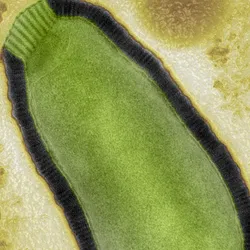
evolutionary biology
Trending

The Ear as a Therapeutic Gateway to the Vagus Nerve
Auricular vagal neuromodulation therapy is a non-invasive and non-surgical treatment that could aid cardiovascular disease management, Long COVID relief, and more.

Universe 25 Experiment
A series of rodent experiments showed that even with abundant food and water, personal space is essential to prevent societal collapse, but Universe 25's relevance to humans remains disputed.

The Federal Government’s Research Innovation Lifeline Has Gone Dark
Congressional inaction has led to the expiration of the federal government’s SBIR/STTR program, cutting off a biotechnology lifeline.

What Are Giant Viruses, and Are They Dangerous?
Lurking in the vast expanse of the ocean and buried deep in the Siberian permafrost, there are giants—not blue whales and mammoths, but giant viruses.
Multimedia

Advancing Biomarker Discovery for Disease Insights
In this webinar, experts discuss new approaches to biomarker discovery and share the research avenues that elucidate the inner workings of different pathologies.

Skip the Wait for Protein Stability Data with Aunty
In this webinar, Andre Mueller will discuss how scientists characterize therapeutic proteins in different formulations and spot the effects of excipients on protein stability.





















